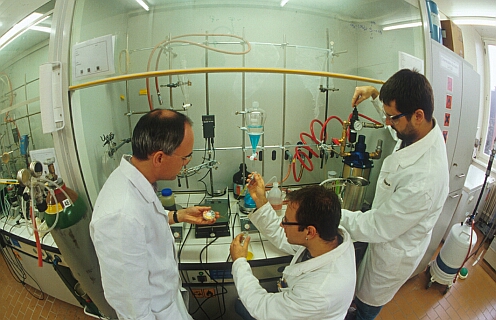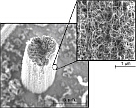New departments at Empa
Focus on nanostructures and functional polymers
Feb 14, 2003 | MARTINA PETER
With the setting up of two sections for nanotechnology and functional polymers, EMPA is underscoring the importance of these specialized fields in its materials science research. EMPA’s activities in nanotechnology focus on the creation of nanostructures, nanotubes as electron sources and quasicrystalline layers. Work on functional polymers concentrates on exploring new development techniques and searching for innovative applications.

Development of functional polymers in Empa’s synthesis
laboratory

